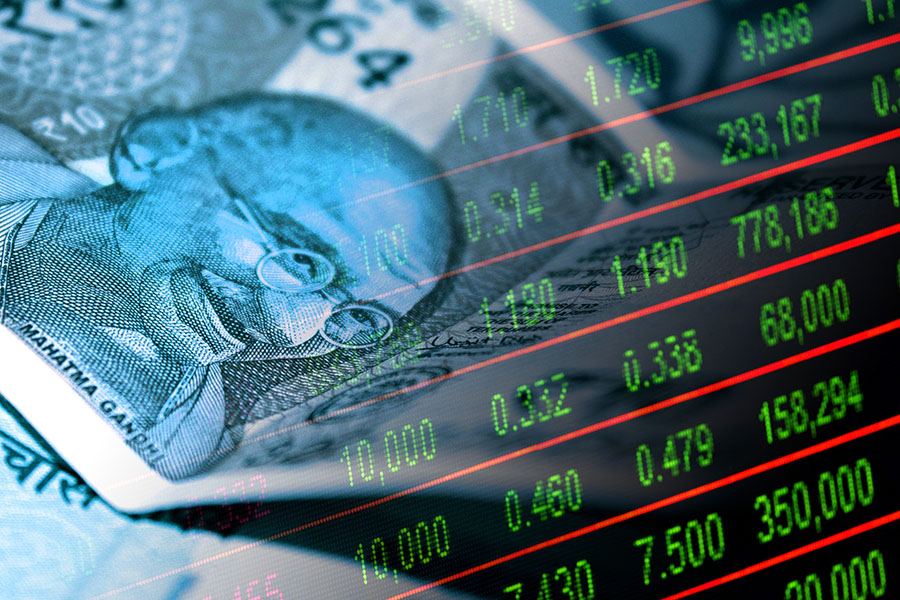
 There are some real advantages that the country will gain as the rupee gains from being accepted globally.
There are some real advantages that the country will gain as the rupee gains from being accepted globally.
Image: Getty Images
The recent Reserve Bank of India’s 90th anniversary ceremony—while highlighting the efforts to control inflation, monitor monetary policy and helping improve asset quality of banks in recent years—also brought into discussion steps to make the rupee more internationally accepted.
Prime Minister Narendra Modi told the RBI that “efforts should be made to make the rupee more accessible and acceptable all over the world”. India’s share of global growth is expected to rise to 18 percent by 2028—from the current 16 percent—an IMF official said last year, indicating that the expectations from India to provide momentum to global growth and trade are rising.
These numbers do not mean much considering that the US dollar is the most widely traded currency, commanding nearly half of global trade and three-fourths of Asia-Pacific trade. RBI governor Shaktikanta Das has, at an annual meeting of the World Economic Forum in Davos this year, clarified that the globalisation of the rupee will not mean replacing the dollar. “There is no such thinking to move towards de-dollarisation… The dollar will continue to be the dominant currency,” he has been reported to have said.
Where are we today on internationalisation of the rupee?
Recently India made its first-ever payment, in rupees, to the United Arab Emirates (UAE) to buy crude oil. This was seen as significant boost for India, which has had to rely on buying 80 percent of its crude oil imports internationally in dollars. The dollar remains a primary current for international trade. But India continues to need more dollars towards imports of chemicals, coal, fertilisers, gold and pharmaceuticals.
India pays for its imports of gold from the UAE in rupees and the UAE, in turn, is using rupees to pay for gems and jewellery from India. But this arrangement has not worked for other countries, for example with Russia, which has, in recent times, struggled to trade in the rupee with India. India has bought oil from Russia in rupees, but Russia has struggled to effectively buy products from India.
The rupee is fully convertible in the current account, but partially in the capital account.
The RBI has taken steps to make the rupee more acceptable in global trade by allowing 20 banks, operating in India, to open 92 Special Rupee Vostro Accounts (SRVAs) with partner banks from 22 countries to promote bilateral trade in a local currency.
Why internationalise the rupee?
There are some real advantages that the country will gain as the rupee gains from being accepted globally. For Indian businesses, it will reduce the cost of doing business by reducing the currency risk if the ecosystem turns volatile.
It will also reduce India’s need to hold huge foreign currency reserves. India’s foreign exchange reserves are at a record high of $642.63 billion as of March 22, RBI data shows.
Billionaire and veteran banker Uday Kotak, the founder and director of Kotak Mahindra Bank, has spoken about the power and importance of the currency as a country seeks to become a superpower. “The power of the reserve currency helps the US to print money and finance what it wants,” Kotak said in his keynote speech on “The future of Finance” at the Forbes India Leadership Awards event on March 7.
“We [India] have to aspire for becoming a potential reserve currency, but to get to that we need discipline and have institutions which are truly world class. If we can reach a reserve currency in ten years, our dream of becoming one of the top two economies in the world, is achievable over next 20-25 years,” he said.
What does the future hold?
Brajesh Kumar Tiwari, an associate professor at Atal Bihar Vajpayee School of Management and Entrepreneurship, Jawaharlal Nehru University, said in a recent column with Firstpost that internationalisation for the Indian rupee is still a long way off, but rupee deals with Singapore and the UAE and the SRVAs are steps in the right direction. “In order for a country’s currency to achieve global recognition, it is imperative that the country demonstrates advancements in its democratic system and economic policies,” Tiwari notes.
India is well placed on these fronts, but how quickly does the RBI and the government move to make the rupee truly global is difficult to assess at the moment, particularly during the election year.
